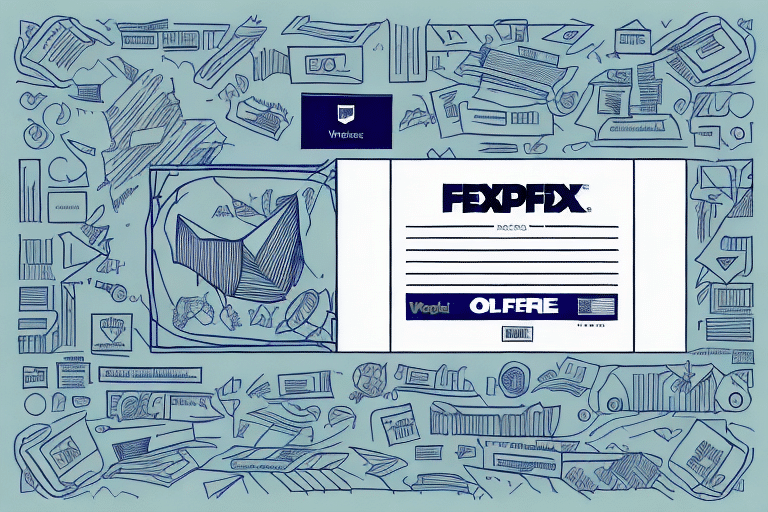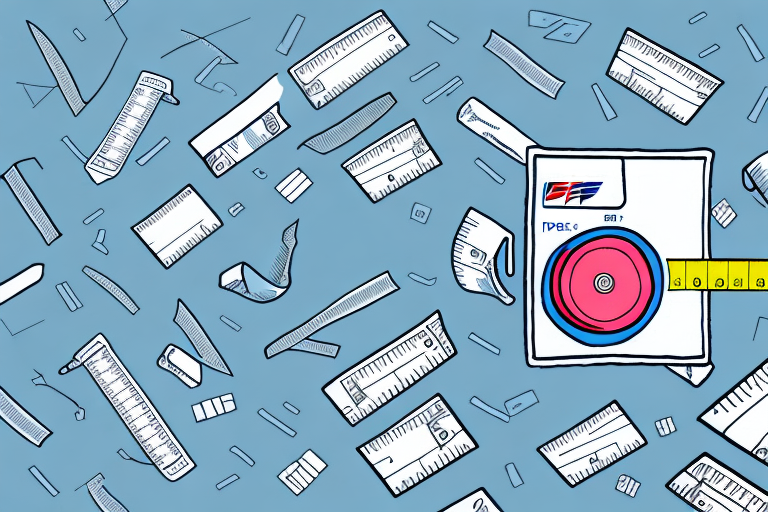Understanding FedEx Additional Handling for Packages Over 202 Inches
When it comes to shipping, understanding the policies and fees associated with your chosen carrier is crucial. For those shipping packages with FedEx that exceed 202 inches in length and girth combined, an additional handling fee may apply. In this article, we will dive into the specifics of FedEx's additional handling policies, how to determine if your package requires it, and tips for reducing the risk of incurring additional fees.
What is FedEx Additional Handling?
FedEx defines additional handling as any package that requires special handling beyond the routine process to ensure safe delivery. For packages that exceed 202 inches in length and girth combined, this may involve additional equipment, labeling, or handling requirements. It's important to note that this fee is in addition to any other applicable fees, such as oversized package surcharges or extra handling charges.
Examples of packages that may require additional handling include those that are fragile, oddly shaped, or have special packaging requirements. FedEx may also apply this fee to packages that are heavy or have an unusual center of gravity, as these can be more difficult to handle and may require special equipment or additional manpower. Carefully considering the size, weight, and shape of your package when shipping with FedEx can help avoid unexpected fees or delivery delays.
The Importance of Knowing FedEx Additional Handling Policies
If you regularly ship large or oversized items with FedEx, understanding the carrier's additional handling policies is crucial. Failure to comply with these policies could result in unexpected fees and delays in delivery. By familiarizing yourself with these policies, you can ensure that your package arrives safely and on time while avoiding unnecessary expenses.
One important aspect of FedEx's additional handling policies is the weight and size restrictions for packages. FedEx has specific weight and size limits for packages that require additional handling, such as those that are over 70 pounds or have a length greater than 108 inches. It's essential to check these restrictions before shipping your package to avoid any unexpected fees or delays in delivery. Additionally, FedEx may require special packaging or labeling for certain items, such as hazardous materials or fragile items. Understanding and following these policies ensures your package is handled properly and arrives at its destination safely.
How to Determine if Your Package Requires Additional Handling
The first step in avoiding additional handling fees is determining whether your package will require it. This can be done by calculating the combined length and girth of your package, defined as the length plus the width and height multiplied by two. If this measurement exceeds 202 inches, your package will likely require additional handling.
- Calculate Length and Girth: Length + (Width + Height) × 2
- Weight Consideration: Packages weighing over 70 pounds may also require additional handling fees.
- Special Items: Items that are fragile or have irregular shapes may necessitate special handling.
Additionally, certain items, such as musical instruments or artwork, may require special handling to ensure they arrive safely. Always check with FedEx to see if any additional fees or requirements apply to your specific item.
Understanding the Dimensions and Weight Limits for FedEx Packages
Along with understanding the policies surrounding additional handling, it's important to be familiar with FedEx's overall dimensions and weight limits for packages:
- Domestic Shipments: Maximum length is 108 inches, and the maximum weight is 150 pounds.
- International Shipments: Maximum length is 108 inches and the maximum weight is 660 pounds.
Be sure to check with FedEx directly for any updates or revisions to these policies by visiting the FedEx Shipping Fees page.
FedEx also has specific guidelines for packaging items to ensure they are protected during transit. This includes using sturdy boxes, proper cushioning materials, and securing all items inside the package. Failure to follow these guidelines may result in additional fees or damage to your shipment. For more information on how to properly package your items for FedEx, visit the FedEx Packaging Guidelines.
Tips for Reducing the Risk of Additional Handling Fees
While not all packages over 202 inches will require additional handling, there are steps you can take to reduce the likelihood of incurring these fees:
- Break Up Large Shipments: Split large shipments into multiple packages that fall under the size and weight limits.
- Use Sturdier Packaging: Ensure your package can withstand the shipping process without requiring special handling.
- Clear Labeling: Include any necessary handling instructions, such as keeping the package upright or avoiding stacking heavy items on top.
- Choose Appropriate Shipping Methods: Opt for shipping methods that are less likely to require special handling, such as ground shipping instead of air shipping.
By taking these steps, you can help ensure that your package arrives safely and without any unexpected fees.
What Happens If Your Package Requires Additional Handling?
If your package requires additional handling, FedEx will apply the fee to your total shipping cost. As of 2023, the additional handling fee is $16 per package within the United States. This fee applies to packages that are larger or heavier than standard size and weight limits, including those over 70 pounds, with a length greater than 48 inches, or a combined length and girth exceeding 130 inches.
FedEx may also apply this fee if your package requires special handling, such as being fragile or containing hazardous materials. It's important to properly measure and weigh your package before shipping to avoid any unexpected fees.
For the most up-to-date fee information, refer to the FedEx Shipping Fees page.
How to Calculate the Cost of FedEx Additional Handling Fees
Calculating the cost of additional handling fees is straightforward:
- Determine the number of packages requiring additional handling.
- Multiply the fee amount ($16) by the number of such packages.
For example, if you have three oversized packages, your total additional handling fee would be $48.
It's important to note that additional handling fees may also apply to packages that are not necessarily oversized but are still difficult to handle. This includes packages that are oddly shaped, have protruding edges, or are not properly packaged. Always double-check FedEx guidelines to ensure your packages are prepared correctly to avoid extra fees.
If you frequently ship packages that require additional handling, consider alternative shipping options or adjusting your packaging to avoid these fees. Some carriers offer lower fees for certain types of packages or provide additional support for difficult-to-handle items. Comparing shipping options can help you find the most cost-effective solution for your business.
When Should You Use FedEx Freight for Oversized Packages?
In some cases, it may be more cost-effective to use FedEx Freight rather than FedEx Ground for shipping oversized packages. FedEx Freight has different size and weight limits and may offer more affordable rates for larger shipments. Be sure to compare rates and policies with both services before making your decision.
FedEx Freight also offers additional services for oversized packages, such as liftgate and inside delivery, which may be necessary for certain shipments. Additionally, FedEx Freight has a team of experts who can assist with specialized handling and transportation requirements for unique or delicate items. If you have any questions or concerns about shipping oversized packages, reach out to FedEx Freight for guidance and support.
Common Misconceptions About FedEx Additional Handling Fees
There are a few misconceptions surrounding FedEx additional handling fees that should be addressed:
- Fee Applicability: Some may assume that this fee only applies to extremely large packages, but it can apply to packages as small as 60 inches in length and girth combined.
- Service Options: Using FedEx's Hold at Location or Delivery Signature options does not exempt packages from additional handling fees.
- Handling Requirements: The fee is not only for packages that require special handling, such as fragile or oddly shaped items; it can also apply to heavy packages over 70 pounds.
Understanding these misconceptions helps ensure you accurately assess potential fees when shipping with FedEx.
Best Practices for Shipping Large Items with FedEx
When shipping large items with FedEx, follow these best practices to ensure safe and timely delivery:
- Use Sturdy Packaging Materials: Select boxes that can withstand the weight and size of your items.
- Properly Label Your Packages: Clear and accurate labels help prevent handling errors.
- Adhere to Size and Weight Limits: Ensure your package falls within FedEx's specified limits to avoid additional fees.
- Invest in Insurance: Protect your items against loss or damage during transit.
Additionally, consider using FedEx Package Protection for added security.
Understanding Other Fees Associated with Large Package Shipping
Additional handling fees are not the only fees associated with shipping large packages with FedEx. Other fees may include:
- Oversized Package Surcharges: Applied to packages exceeding standard size limits.
- Extended Delivery Area Fees: Charged for deliveries to remote or hard-to-reach locations.
- Residential Delivery Fees: Additional charges for delivering to residential addresses.
Carefully reviewing your total shipping costs and FedEx's policies before finalizing your shipment helps avoid unexpected expenses. Visit the FedEx Shipping Fees page for comprehensive information on all applicable fees.
How to Properly Label and Prepare Your Package for Shipping with FedEx
Proper labeling and preparation of your package are crucial for ensuring successful delivery with FedEx. Follow these steps:
- Clear and Accurate Address Labels: Ensure the recipient's address is correct and legible.
- Include Necessary Customs Forms: For international shipments, complete all required customs documentation.
- Secure Your Package: Use strong tape and proper cushioning materials to protect your items.
- Follow Specific Instructions: Adhere to any special handling instructions provided by FedEx for your shipment type.
For detailed packaging instructions, refer to FedEx's Packaging Guidelines.
Avoiding Common Mistakes When Shipping Large Items with FedEx
To ensure a smooth shipping experience with FedEx, avoid these common mistakes:
- Incorrect Package Dimensions: Failing to accurately measure your package can lead to unexpected fees.
- Improper Packaging Materials: Using inadequate materials increases the risk of damage and additional handling requirements.
- Ignoring Additional Fees: Not checking for any additional fees or restrictions before shipping can result in higher costs.
By reviewing all policies and requirements in advance and taking necessary precautions when labeling and preparing your package, you can avoid these common mistakes and ensure successful delivery.
The Future of Shipping Oversized Packages with FedEx
As shipping needs and technology continue to evolve, FedEx's policies and services for shipping oversized packages are likely to change. Stay up-to-date with any revisions or updates to these policies by regularly visiting the FedEx Shipping page. Additionally, consider consulting with a shipping specialist if you have complex or unique shipping requirements to ensure you are utilizing the most efficient and cost-effective methods.
Overall, understanding FedEx's additional handling policies and fees is crucial for anyone shipping large items with the carrier. By following best practices, double-checking policies and fees, and properly preparing your package for shipping, you can ensure safe and successful delivery with FedEx.






















